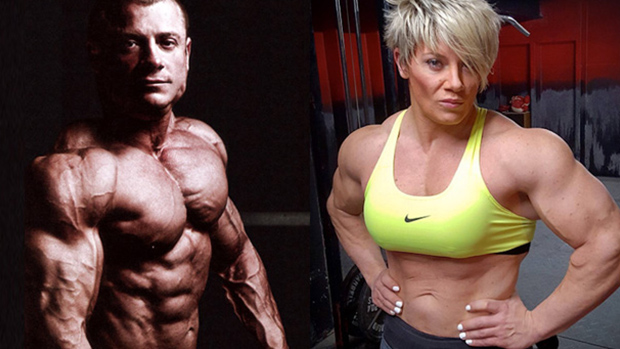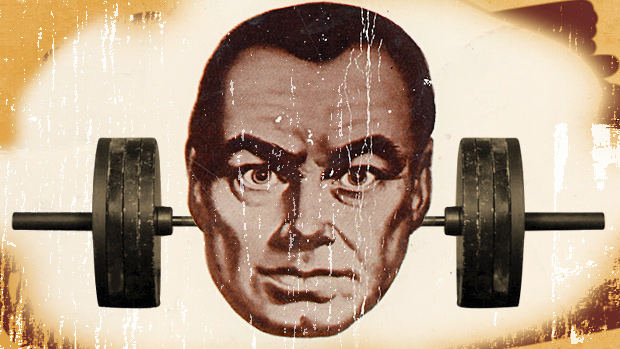Hear Me Out
After reading the title you've probably already started writing hate messages on social media explaining how Fraser, Froning, and Maddox are almost as strong as the top lifters in the country.
I know that. But there's something missing in most CrossFitters' training.
Read on and you might learn quite a few things that will make you a better, healthier CrossFitter and athlete.
Forms of Strength
At the elite level, male CrossFitters generally snatch over 250 pounds (with plenty being in the 275-300 range), clean & jerk 335 or more, deadlift in the 500s, squat in the 450-500 range, and push press in the 275-315 range.
So how can I say that these guys are too weak?
Well, they are weak – isometrically and eccentrically. Their concentric (lifting) strength is very high, but it's too high relative to their other types of strength.
Why? Because in CrossFit competitions, the eccentric (lowering or negative) portion of a rep is de-emphasized to go faster and expend less energy.
Look at the most common CrossFit exercises and their variations: snatch, clean, jerk, etc. They require very high concentric force production, i.e. explosive lifting, and very little eccentric loading because most of the time they drop the bar after each rep.

Explosive Action is Concentric Action
Kipping Pull-Ups
Explosive action with a high rate of force production during the concentric followed by almost a free-fall during the lowering portion of the movement. Extremely low emphasis on eccentric action.
Muscle-Ups
Same thing as with the kipping pull-ups. Emphasis is on proper positions during the descent, but there's very little eccentric force production during the lowering portion.
Deadlifts
While you can do the eccentric/lowering portion of a deadlift under control, most CrossFit athletes let the bar drop quickly to use the rebound and make the reps easier/faster. In a competitive setting it's fair game. You have to go fast, or drop it down and reset on every rep (to save energy). So again, big emphasis on developing concentric strength, almost nothing to build eccentric strength.
Kettlebell Swings
By nature the kettlebell swing is an explosive concentric action. Trying to stay relaxed during the eccentric/lowering phase is proper form.
Sled Pushing/Rowing Ergometer/Airdyne Bike
There is zero eccentric emphasis on any form of sled pushing, or on the rowing ergometer and airdyne bike. These are all purely concentric.
Wall Ball
Sure, you're squatting down so there's some eccentric action. But the amount of force production is very low compared to the force produced during the concentric portion. In fact, during the eccentric/lowering phase of the wall ball the athlete actually tries to go down as fast as possible, which requires "turning off" the muscles on the way down. So the quads, which would be loaded eccentrically during the descent, are actually turned down and the hamstrings/glutes pull you down faster (which is a concentric action not an eccentric one). The only true eccentric loading is at the point of reversal – when you switch back to going up – and this is mostly shock absorption done via the stretch reflex. Then when you project the ball, you produce more force because you have to produce upward acceleration. So again, you train the concentric action much more than the eccentric one.
Rope Climb
During rope climbs the effort is more intense when pulling yourself up the rope, which is almost all concentric and some isometric effort. On the way down you're actually using technique and friction to get down under control, not an intense muscular effort. So the portion where you could actually develop eccentric strength by controlling the descent (with your muscle strength instead of friction) is pretty much rendered effortless.
Basic Lifts
This is the only time the eccentric is somewhat trained – regular strength training on basic lifts like the squat and presses. And even then it's rarely, if ever, emphasized; it's just not de-emphasized.

Eccentric Essentials
Eccentric and concentric actions use different motor strategies. It's possible to strengthen one without significantly strengthening the other.
Eccentric actions tend to strengthen the distal portions of a muscle more so than the middle portion of the muscle belly. (It's not broscience, look it up.) They also tend to recruit less muscle fibers but a greater proportion of fast-twitch fibers.
During eccentric actions, intramuscular friction is your ally. During concentric actions it's your enemy. So if you're focusing on only one mode of action, it doesn't mean that you'll improve both to the same degree.
Why Emphasize the Eccentric?
Sure, you won't use many eccentric actions in competition, but it's important to include some form of eccentric strengthening. Here's why:
- Eccentric work strengthens the tendons more than concentric and isometric actions. Stronger tendons mean a greater overall strength potential and a lower risk of injury.
- Eccentric work increases your capacity to recruit fast-twitch muscle fibers. The better you become at recruiting these, the more easily you can gain strength and power.
- Doing controlled submaximal eccentric work improves motor learning and strengthens the body's capacity to maintain optimal positions during your movements. This will make you more efficient, which means you'll waste less energy in competition.
- Supramaximal eccentric work on the big basic movements will strengthen the core/stabilizer muscles. They also desensitize the Golgi Tendon Organs which are basically protective mechanisms preventing you from producing too much force. The more desensitized the GTOs are, the more force you can produce even without adding muscle mass.
- Handling supramaximal weights on partial or eccentric exercises will also give you more confidence when lifting heavy, but not maximal weights. These will feel lighter after doing supramax work and you'll suffer less psychological inhibition.
If you want to improve your performance potential and longevity in CrossFit competitions, I highly suggest that you start studying the different forms of eccentric training methods.





